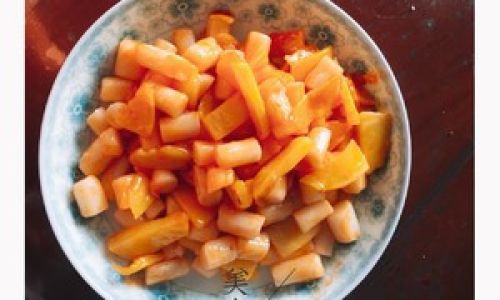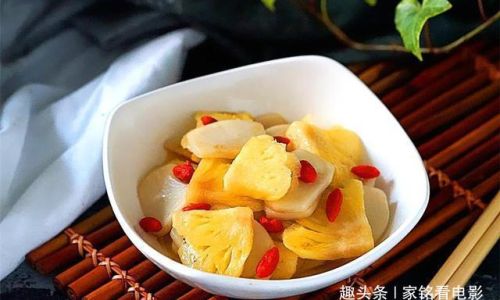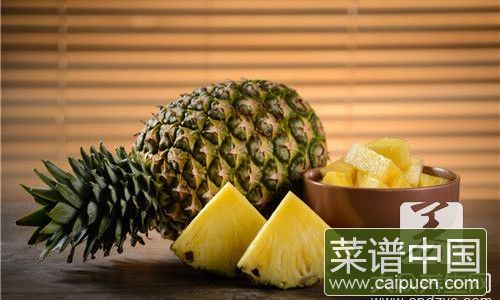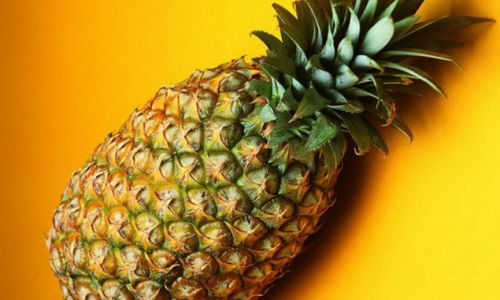Introduction
Pineapple fried rice cakes, a dish that marries the vibrant sweetness of tropical fruit with the chewy satisfaction of glutinous rice, is a beloved staple in many Asian households. This culinary fusion, often found in street food stalls and family kitchens alike, offers a delightful balance of flavors and textures that appeal to both traditionalists and adventurous eaters. While its origins can be traced to Southeast Asian and Chinese culinary traditions, the recipe has evolved over time, adapting to local ingredients and personal preferences. In this comprehensive guide, we will explore the art of preparing this dish from scratch, ensuring that even novice cooks can master its nuances. From selecting the freshest pineapple to achieving the ideal caramelization of rice cakes, each step is designed to elevate your home-cooked meal to gourmet heights.
The Allure of Pineapple Fried Rice Cakes
What makes pineapple fried rice cakes so irresistible? The answer lies in their harmonious interplay of contrasting elements. The natural acidity and sweetness of pineapple cut through the richness of soy-based sauces, while the rice cakes—soft yet slightly chewy—provide a satisfying base. This dish is as visually stunning as it is delicious, with golden-brown rice cakes, chunks of juicy pineapple, and pops of colorful vegetables creating a feast for the eyes. Moreover, its versatility allows for endless customization, making it a crowd-pleaser at dinner tables, potlucks, or even as a standalone meal.

Ingredients: Building Blocks of Flavor
To embark on this culinary journey, gather the following ingredients. Each component plays a pivotal role in shaping the dish’s character:
- Rice Cakes (Nian Gao): Often sold in refrigerated or frozen sections of Asian markets, these cylindrical or flat rice cakes are made from glutinous rice flour. Their sticky texture becomes pleasantly chewy when cooked, forming the dish’s backbone.
- Fresh Pineapple: Opt for a ripe, fragrant pineapple. Its sweetness will mellow during cooking, leaving behind a subtle tanginess that elevates the dish. Canned pineapple can substitute in a pinch but lacks the depth of flavor.
- Aromatics: Garlic, ginger, and shallots form the flavor foundation. Their pungent notes mellow into a savory base when sautéed.
- Protein (Optional): Shrimp, chicken, or tofu add heft. For a vegetarian twist, omit meat or use mushrooms.
- Vegetables: Bell peppers, carrots, and peas introduce color, crunch, and nutritional balance.
- Sauces: A blend of soy sauce, oyster sauce, and a touch of sugar creates the signature umami-sweet profile.
- Oil: Neutral oil like vegetable or peanut ensures even cooking without overpowering other flavors.
- Garnishes: Fresh cilantro, sesame seeds, or a squeeze of lime add brightness before serving.
Preparation: The Key to Perfect Texture
Before igniting the stove, meticulous preparation ensures seamless cooking:
- Soak Rice Cakes: If using frozen rice cakes, soak them in warm water for 10–15 minutes to soften. This reduces cooking time and prevents them from becoming gummy.
- Chop Pineapple: Dice the pineapple into bite-sized chunks, reserving any juice for added sweetness.
- Mise en Place: Mince garlic, slice shallots, julienne ginger, and chop vegetables uniformly for even cooking.
- Marinate Protein (if using): Toss shrimp or chicken in a pinch of cornstarch and soy sauce to tenderize.
Cooking Process: Step-by-Step Mastery
Sear the Rice Cakes
Heat a wok or large skillet over high heat until smoking. Add a tablespoon of oil, then drain the rice cakes and add them to the pan. Spread them in a single layer to ensure even browning. Let them sear undisturbed for 2–3 minutes until golden patches appear. Flip and repeat. This step caramelizes the exterior, preventing sogginess later. Remove and set aside.
Sauté Aromatics
Reduce heat to medium and add another drizzle of oil. Toss in minced garlic, ginger, and shallots. Stir-fry for 30 seconds until fragrant but not browned.
Cook Protein (Optional)
Increase heat to high. Add marinated shrimp or chicken, stirring vigorously until opaque or cooked through. For tofu, pat dry and pan-fry until golden before adding. Remove and set aside with rice cakes.
Stir-Fry Vegetables
Add diced bell peppers and carrots to the wok. Stir-fry for 2–3 minutes until crisp-tender. Retain their vibrancy by avoiding overcooking.
Introduce Pineapple
Toss in pineapple chunks and any reserved juice. Sauté for 1–2 minutes to meld flavors. The pineapple will release moisture, creating a light sauce.

Reunite Components
Return rice cakes and protein to the wok. Drizzle with a mixture of soy sauce, oyster sauce, and sugar. Toss gently to coat, ensuring the sauce caramelizes slightly without burning.
Final Flourish
Fold in peas (if using) and cook for another minute. Adjust seasoning with a pinch of salt or a squeeze of lime if needed. The dish should glisten with sauce but not be overly wet.
Serving Suggestions: Elevating the Experience
Pineapple fried rice cakes shine when paired with complementary flavors and textures:
- Steamed Jasmine Rice: For those seeking extra carbs, a small bowl of fluffy rice balances the dish’s richness.
- Pickled Vegetables: A side of tangy daikon or carrot pickles cuts through the sweetness.
- Fresh Herbs: Scatter cilantro or basil leaves just before serving for aromatic freshness.
- Chili Oil: A drizzle of homemade chili oil adds heat for spice enthusiasts.
Customization: Making It Your Own
The beauty of this recipe lies in its adaptability. Here are creative twists to experiment with:
- Protein Swaps: Try cubed pork belly for richness or edamame for plant-based protein.
- Spice Infusion: Add sliced Thai chilies or a spoonful of gochujang for a fiery kick.
- Nutty Crunch: Top with toasted cashews or sesame seeds for added texture.
- Vegetarian Variation: Use mushrooms and extra vegetables, substituting oyster sauce with mushroom-flavored soy sauce.
Troubleshooting: Common Pitfalls and Solutions
- Soggy Rice Cakes: Overcrowding the pan leads to steaming instead of searing. Cook in batches if necessary.
- Bland Flavor: Ensure sufficient seasoning. Taste and adjust sauces before serving.
- Mushy Pineapple: Overcooking breaks down the fruit. Add it towards the end to retain structure.
- Burnt Sauce: High heat can caramelize sauces too quickly. Maintain medium-high heat and stir continuously.
Cultural Context: A Dish with Roots
While pineapple fried rice cakes are now a global favorite, their roots trace back to Chinese New Year celebrations, where rice cakes symbolize prosperity and togetherness. The pineapple, or “ong lai” in Hokkien, translates to “fortune comes,” making this dish a festive staple. Over time, it transcended cultural boundaries, becoming a street food sensation in Thailand, Malaysia, and beyond. Each region adds its flair—some incorporate curry powder, others fish sauce—but the essence remains: a celebration of sweet and savory harmony.
Conclusion: A Culinary Adventure Awaits
Mastering pineapple fried rice cakes is a journey worth savoring. From the initial sizzle of rice cakes in the wok to the final burst of pineapple sweetness, each step invites creativity and connection. Whether served at a family reunion or enjoyed as a solo indulgence, this dish embodies the joy of cooking—transforming simple ingredients into a memory-laden meal. So, don your apron, gather your ingredients, and let the symphony of flavors begin. Your taste buds will thank you.






0 comments